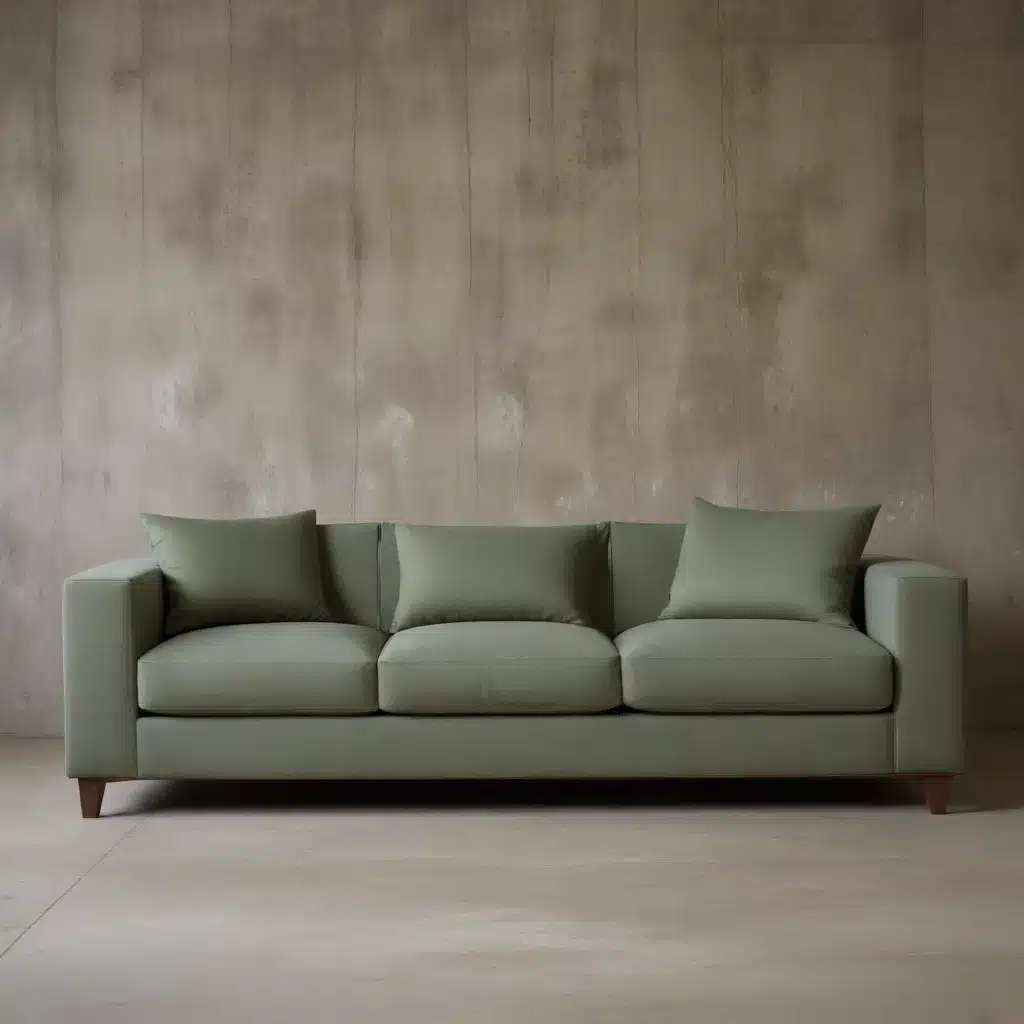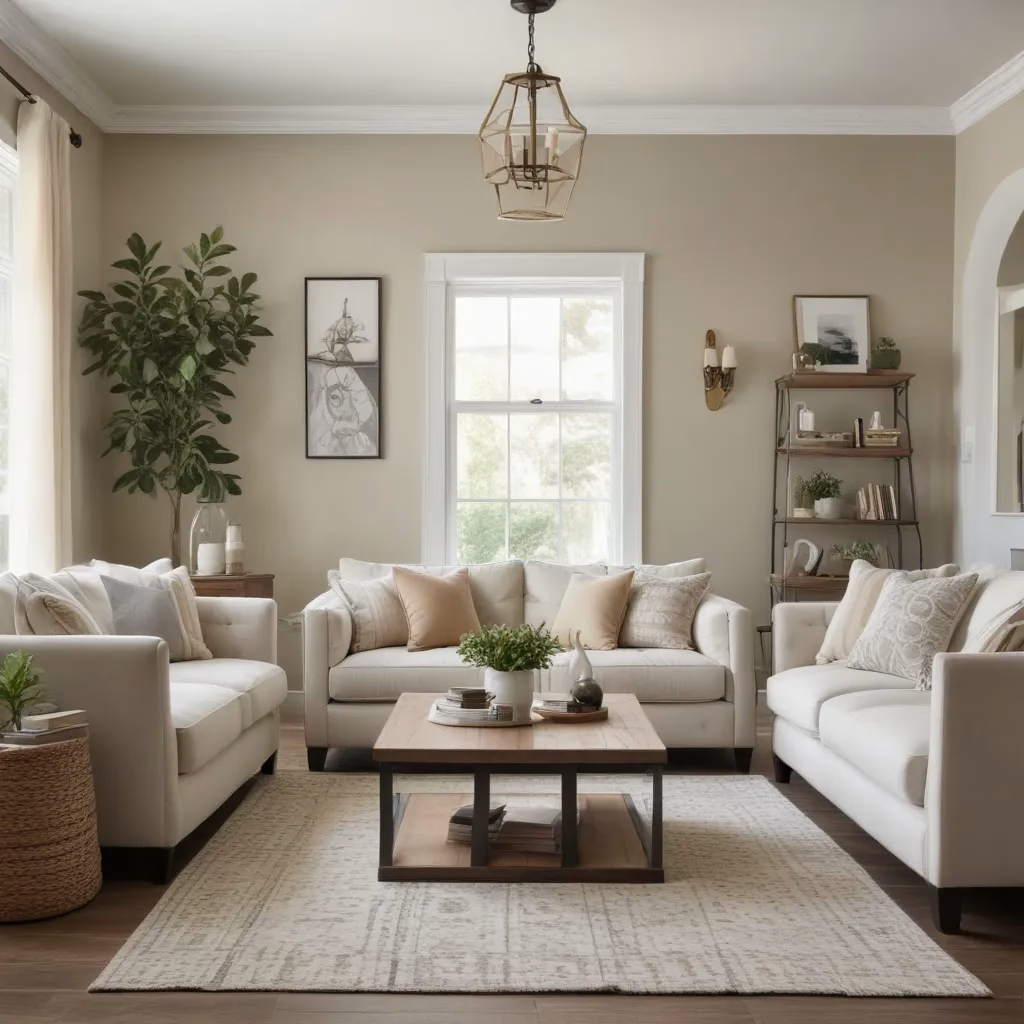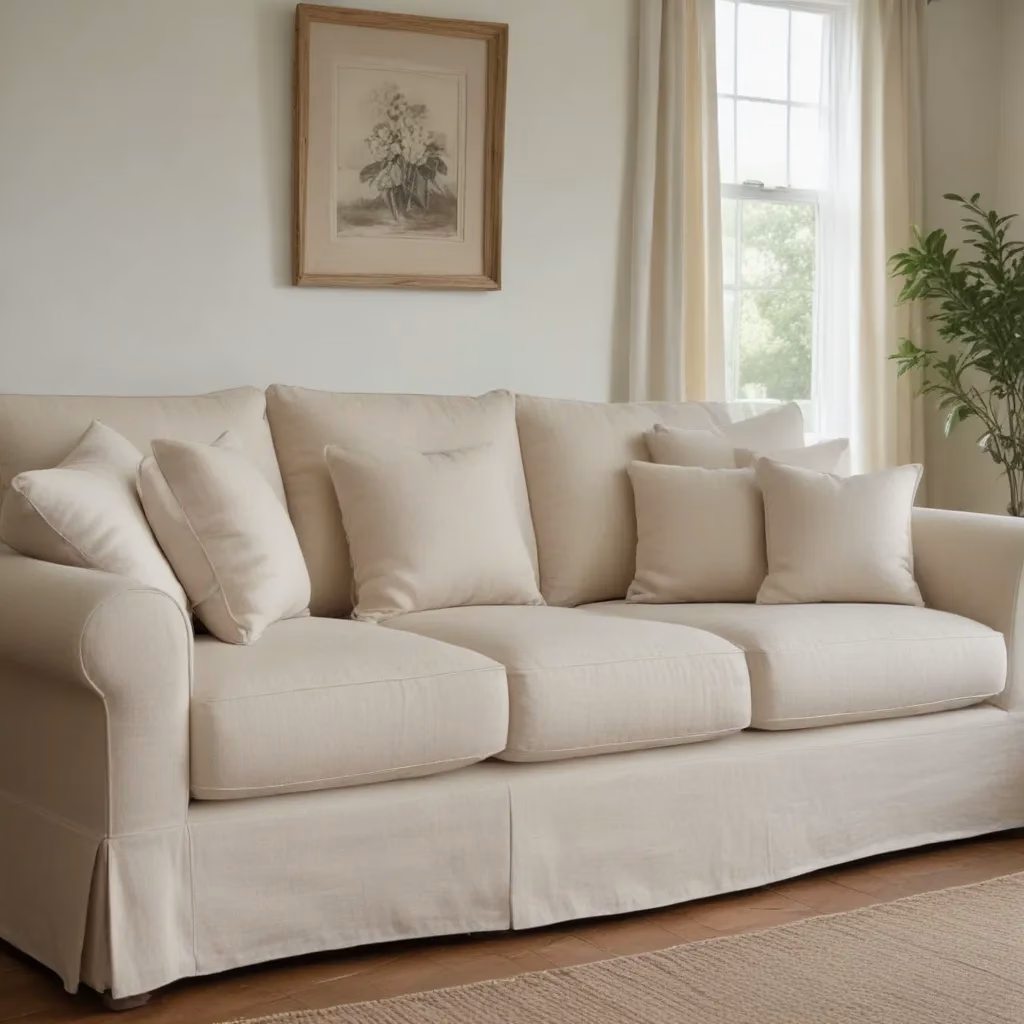
The Rise of Eco-Friendly Upholstery
As a furniture specialist with years of experience in the industry, I’ve witnessed a significant shift in consumer preferences towards sustainable and environmentally conscious home furnishings. This trend is particularly noticeable in the sofa market, where eco-chic fabrics are taking center stage.
The push for sustainability in furniture design isn’t just a passing fad; it’s a response to the growing awareness of our environmental impact. Consumers are becoming increasingly mindful of the materials used in their homes, and they’re demanding options that align with their values. This shift has prompted manufacturers and designers to innovate, resulting in a wide array of eco-friendly upholstery choices that don’t compromise on style or comfort.
One of the most exciting developments I’ve seen is the use of recycled materials in fabric production. Textiles made from reclaimed plastic bottles, for instance, are now being transformed into soft, durable upholstery that’s indistinguishable from traditional fabrics. These materials not only reduce waste but also require less energy to produce compared to virgin fibers.
Natural Fibers: A Sustainable Choice
When it comes to eco-friendly sofa fabrics, natural fibers are leading the charge. As someone who’s helped countless clients select the perfect sofa, I can attest to the growing popularity of materials like organic cotton, hemp, and linen. These fibers are not only renewable but also biodegradable, making them an excellent choice for environmentally conscious consumers.
Organic cotton, in particular, has seen a surge in demand. Unlike conventional cotton, which is often grown using harmful pesticides and excessive water, organic cotton is cultivated using methods that have a lower impact on the environment. The resulting fabric is soft, breathable, and free from harmful chemicals, making it ideal for those with sensitive skin or allergies.
Hemp is another natural fiber that’s making waves in the upholstery world. It’s one of the most sustainable crops available, requiring minimal water and no pesticides to grow. Hemp fabric is incredibly durable, naturally resistant to mold and mildew, and becomes softer with each wash. I’ve recommended hemp upholstery to many clients looking for a long-lasting, eco-friendly option for their sofas.
Innovative Synthetic Options
While natural fibers are excellent, the world of eco-friendly synthetics is also expanding rapidly. As someone who keeps a close eye on industry developments, I’m impressed by the advancements in creating sustainable synthetic fabrics that mimic the look and feel of traditional materials.
One such innovation is the creation of fabrics made from recycled polyester. These materials give new life to plastic waste, reducing the amount that ends up in landfills or oceans. The process of creating these fabrics consumes less energy and water compared to producing new polyester, making it a more environmentally friendly option.
Another exciting development is the use of bio-based synthetics. These fabrics are made from renewable resources like corn or sugarcane, rather than petroleum-based products. They offer the durability and easy maintenance of traditional synthetics but with a much smaller carbon footprint.
The Impact of Eco-Chic Fabrics on Sofa Design
The introduction of these sustainable materials has had a profound effect on sofa design. Designers are now able to create pieces that are not only environmentally responsible but also visually stunning. I’ve seen firsthand how these eco-chic fabrics can transform a space, adding texture, color, and a sense of conscientiousness to any room.
One of the most significant changes I’ve noticed is the shift towards more natural, earthy color palettes. Undyed fabrics and those colored with natural dyes are becoming increasingly popular, offering a raw, authentic aesthetic that resonates with many homeowners.
Texture is another area where eco-friendly fabrics excel. The natural variations in materials like linen and hemp create a rich, tactile experience that adds depth to sofa designs. I often encourage clients to mix and match textures, combining smooth recycled synthetics with nubby natural fibers for a dynamic, layered look.
Caring for Eco-Friendly Upholstery
As with any furniture investment, proper care is essential to maintain the beauty and longevity of eco-friendly sofas. In my experience, many sustainable fabrics are surprisingly easy to care for, but there are some specific considerations to keep in mind.
For natural fibers like organic cotton and linen, regular vacuuming is key to prevent dust and dirt from settling into the fabric. Spills should be blotted immediately with a clean, dry cloth to prevent staining. For more stubborn marks, a mixture of mild soap and water is often sufficient.
Synthetic eco-fabrics, such as those made from recycled materials, tend to be more stain-resistant and easier to clean. However, it’s still important to address spills promptly and avoid harsh chemical cleaners that could damage the fabric or leach harmful substances into the environment.
I always recommend checking the manufacturer’s care instructions, as different eco-friendly fabrics may have specific requirements. Some may be suitable for machine washing, while others may need professional cleaning. By following these guidelines, you can ensure your sustainable sofa stays beautiful for years to come.
The Future of Eco-Chic Sofa Design
Looking ahead, I’m excited about the future of eco-chic sofa design. The industry is constantly evolving, with new materials and technologies emerging all the time. One area I’m particularly interested in is the development of circular design principles in furniture manufacturing.
Circular design focuses on creating products that can be easily disassembled, repaired, and recycled at the end of their life. This approach is gaining traction in the furniture industry, with some manufacturers offering take-back programs for old sofas and using the materials to create new pieces.
Another trend I’m seeing is the integration of smart technologies into eco-friendly sofas. From fabrics that can regulate temperature to built-in sensors that monitor air quality, these innovations are making sustainable living more comfortable and convenient than ever before.
As consumers become more educated about the environmental impact of their furniture choices, I expect to see continued growth in the eco-chic sofa market. This shift is not just about following a trend; it’s about making conscious decisions that benefit both our homes and the planet.
Choosing the Right Eco-Friendly Sofa for Your Home
When it comes to selecting an eco-friendly sofa, there are several factors to consider. As someone who’s guided numerous clients through this process, I’ve developed a few key points to keep in mind:
-
Material Composition: Look for sofas made with certified organic or recycled materials. Pay attention to both the upholstery and the internal components, such as cushion fillings and frame materials.
-
Durability: A truly sustainable sofa should be built to last. Look for high-quality construction and materials that can withstand daily use.
-
Versatility: Choose a design that can adapt to changing styles and needs. Modular sofas or those with removable covers can be easily updated or repaired, extending their lifespan.
-
Local Production: When possible, opt for sofas made locally to reduce transportation emissions and support your local economy.
-
Certifications: Look for third-party certifications that verify environmental claims, such as GOTS for organic textiles or FSC for sustainably sourced wood.
Remember, the most sustainable choice is often the one you’ll love and use for many years to come. Don’t be afraid to invest in quality pieces that reflect your personal style and meet your functional needs.
The Role of Consumer Demand in Driving Sustainability
As a furniture specialist, I’ve observed firsthand how consumer demand has been a driving force behind the eco-chic sofa movement. More and more customers are asking questions about the environmental impact of their furniture choices, and manufacturers are responding.
This shift in consumer consciousness has led to greater transparency in the furniture industry. Many companies now provide detailed information about their sourcing practices, manufacturing processes, and environmental initiatives. As a result, it’s becoming easier for consumers to make informed decisions about their purchases.
I’ve also noticed a growing interest in vintage and secondhand sofas among my clients. Choosing pre-loved pieces is an excellent way to reduce waste and give new life to well-made furniture. Many of these older sofas were built to last and can be easily reupholstered with eco-friendly fabrics for a fresh, modern look.
Balancing Style and Sustainability
One common misconception I often encounter is that eco-friendly sofas are limited in style or aesthetic appeal. Nothing could be further from the truth! The range of sustainable fabrics and designs available today is truly impressive, catering to every taste from minimalist modern to cozy traditional.
I’ve worked with clients to create stunning interiors centered around eco-chic sofas. For example, a sleek sectional upholstered in recycled velvet can anchor a contemporary living room, while a classic Chesterfield covered in organic linen brings timeless elegance to a study.
The key is to approach your sofa selection with an open mind. Eco-friendly options can be just as luxurious and stylish as their conventional counterparts, often with the added benefit of unique textures and a rich backstory.
The Importance of Proper Sofa Maintenance
Maintaining your eco-friendly sofa is not just about keeping it looking good; it’s also an essential part of sustainable living. By properly caring for your furniture, you can extend its lifespan and reduce the need for replacement, thereby minimizing waste.
In my experience, many eco-friendly fabrics are surprisingly durable and easy to maintain. However, it’s important to follow care instructions carefully to preserve the integrity of the materials. Here are some general tips I share with my clients:
-
Regular Cleaning: Vacuum your sofa weekly to remove dust and debris. Use a soft brush attachment to avoid damaging the fabric.
-
Spot Cleaning: Address spills immediately using a clean, damp cloth. Avoid rubbing, which can spread the stain and damage the fibers.
-
Rotation: Rotate cushions regularly to ensure even wear and maintain the sofa’s shape.
-
Protection: Consider using throws or slipcovers in high-traffic areas to protect the upholstery from excessive wear.
-
Professional Cleaning: Schedule professional cleaning as recommended by the manufacturer, typically once or twice a year.
By following these simple steps, you can keep your eco-chic sofa looking beautiful for years to come, maximizing your investment and minimizing your environmental impact.
The Broader Impact of Sustainable Furniture Choices
Choosing an eco-friendly sofa is about more than just furnishing your home; it’s a decision that has far-reaching implications for our planet and communities. As someone deeply involved in the furniture industry, I’ve seen how sustainable practices can positively impact every stage of the supply chain.
For instance, the shift towards organic and sustainably sourced materials has led to improved farming practices and better working conditions for textile workers. The demand for recycled materials has spurred innovations in waste management and recycling technologies. And the focus on local production has helped revitalize traditional craftsmanship and boost local economies.
Moreover, eco-friendly sofas often have a lower carbon footprint due to reduced transportation needs and more efficient production processes. By choosing these products, consumers are indirectly supporting a more sustainable and equitable global economy.
Embracing the Eco-Chic Sofa Revolution
As we look to the future, it’s clear that eco-chic sofas are more than just a passing trend. They represent a fundamental shift in how we think about our homes and our impact on the world around us. From innovative materials to thoughtful design, these pieces offer a way to create beautiful, comfortable living spaces without compromising our environmental values.
Whether you’re in the market for a new sofa or simply curious about sustainable furniture options, I encourage you to explore the world of eco-chic design. You might be surprised at how easy it is to find a piece that not only meets your style and comfort needs but also aligns with your ethical considerations.
Remember, every choice we make in our homes has the power to shape the world around us. By opting for sustainable, eco-friendly sofas, we’re not just furnishing our living rooms – we’re investing in a better future for our planet. And that’s something we can all feel good about sitting on.
For more information on sustainable furniture options and expert advice on choosing the perfect eco-chic sofa for your home, visit Sofa Spectacular. Our team is dedicated to helping you create a beautiful, sustainable living space that you’ll love for years to come.



